Recent Water Damage Posts
Navigating Water Damage in Condos and Apartments: Resolving Responsibility and Implementing Solutions
2/7/2024 (Permalink)
Water damage can be a significant challenge in condos and apartments, primarily because of shared walls, floors, and ceilings. Whether burst pipes, leaks, or floods occur, addressing them effectively requires understanding the responsibilities of homeowners, tenants, and management. In this blog post, we will explore the intricacies of dealing with water damage in condos and apartments, from determining liability to implementing solutions.
Responsibility for Water Damage
When water damage occurs in a shared living space, determining liability is essential to facilitate prompt and effective restoration. Typically, the condominium association or apartment management is responsible for damage to the building structure or common areas. Still, individual homeowners and tenants may be liable for damage to their personal belongings or any damages caused by their negligence.
Immediate Response
Regardless of who's liable, immediate response to water damage is crucial to minimize the scope of damage and prevent further complications. Tenants and homeowners should promptly report any signs of leaks, flooding, or water damage to the management or association and take necessary steps, such as turning off the water supply or power.
Mitigation and Restoration
Once the source of the water damage has been resolved, mitigation and restoration should begin as soon as possible. The condo association or apartment management typically hires restoration professionals to assess and restore the affected areas. Tenants and homeowners should cooperate with the professionals and follow any instructions regarding inspection, repair, mitigation, and restoration.
Preventing Future Water Damage
Prevention is crucial to reduce the likelihood of future water damage incidents. Regular maintenance of plumbing systems, appliance inspections, and routine checks for leaks and damage can help prevent water damage. Additionally, homeowners and tenants should ensure they have adequate insurance coverage to protect personal belongings against future water damage occurrences.
Open Communication
Effective communication and collaboration between homeowners, tenants, and management are essential in mitigating the effects of water damage. Condo associations and apartment management should communicate their expectations, responsibilities, and procedures clearly to the homeowners and tenants. Homeowners and tenants should inform management of any changes in occupancy, any significant purchases, or any maintenance issues to ensure that they are addressed promptly.
Effective management of water damage in condos and apartments requires an understanding of shared responsibilities, prompt response, mitigation and restoration, preventing future damage, and open communication. By adhering to these principles, homeowners, tenants, and management can minimize the effects of water damage and keep their living spaces safe and comfortable.
Restoring Water-Damaged Furniture and Belongings: Tips to Salvage and Renew Your Treasured Items
10/18/2023 (Permalink)
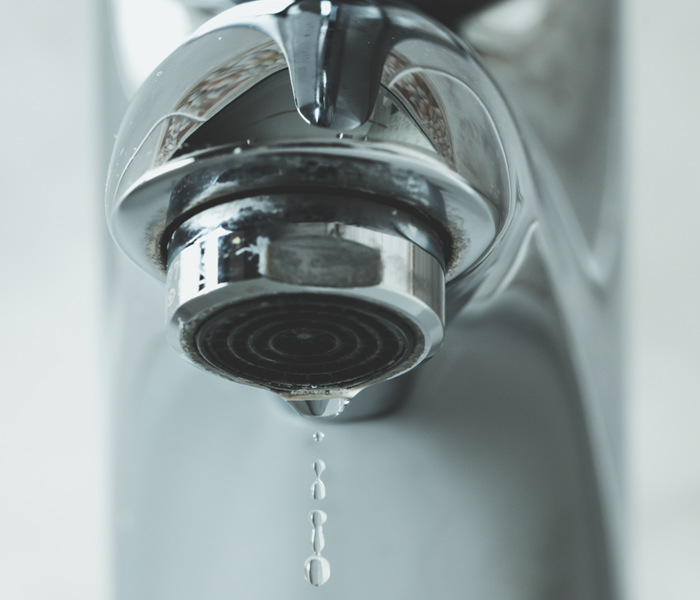 Leave the restoring of your furniture or belongings to the professionals after a restoration emergency.
Leave the restoring of your furniture or belongings to the professionals after a restoration emergency.
Water damage can wreak havoc on your furniture and treasured belongings, causing stains, warping, and mold growth. While it may seem like a hopeless situation, with the right knowledge and techniques, you can restore many water-damaged items and preserve their sentimental or monetary value. In this blog post, we will provide you with tips and steps to help you salvage and renew your water-damaged furniture and belongings.
Safety First
Before handling any water-damaged items, ensure the area is dry and safe to avoid accidents or injuries. Wear appropriate protective gear such as gloves, goggles, and masks to minimize exposure to mold and bacteria.
Assess the Damage
Categorize items. Separate your water-damaged items into categories such as furniture, textiles, electronics, and documents to determine the appropriate restoration approach.
Identify porous and non-porous materials: Items made of porous materials such as fabric, wood, or leather are more susceptible to water damage and may require more extensive restoration efforts.
Furniture Restoration
- Remove excess moisture: Wipe down furniture surfaces to remove excess moisture. Use towels or a wet-dry vacuum for upholstery.
- Air drying: Allow furniture to air dry in a well-ventilated area. Avoid placing them in direct sunlight as it may cause further damage or discoloration.
- Consider professional restoration: For valuable or antique furniture, consult with professional furniture restoration experts who specialize in water damage repairs.
Textile Restoration
- Washable fabrics: Machine wash or have these items professionally dry cleaned.
- Delicate fabrics: Consult with a professional cleaner experienced in handling water-damaged delicate fabrics such as silk or wool.
- Moldy textiles: If the items have developed mold growth, consider contacting a mold remediation specialist to assess and treat them.
Electronics Restoration
- Power off and disconnect: Disconnect the power source and remove the batteries from electronic devices affected by water damage.
- Air drying: Place electronics in a well-ventilated area or use a fan to facilitate drying. Do not use heat sources like hairdryers, as they can cause further damage.
- Consult professionals: For valuable or complex electronic items, consult with professionals who specialize in electronics restoration.
Document Restoration
- Handle with care: Treat water-damaged documents with extreme care to avoid further deterioration.
- Air drying: Lay documents flat or hang them with clips in a clean and dry area. Avoid stacking wet documents, as they may fuse together.
- Professional assistance: If the documents are valuable, rare, or have sentimental importance, consult with a document preservation specialist for proper restoration techniques.
Remember, the success of restoring water-damaged furniture and belongings depends on various factors such as the extent of the damage, the type of material, and the timeliness of your response. Acting quickly, following proper restoration techniques and seeking professional assistance when necessary can greatly increase your chances of salvaging and renewing these precious items. So, don't be disheartened, take the necessary steps, and bring back the beauty and functionality of your treasured belongings.
Water Damaged Electronics: What to Do Next?
7/27/2023 (Permalink)
Water damage can wreak havoc on electronic devices, leaving many of us wondering what steps to take when faced with such a situation. Whether it's a smartphone, laptop, or other valuable electronics, quick and appropriate action is crucial to minimize the damage and increase the chances of successful recovery. In this blog post, we'll explore the essential steps you should take when dealing with water-damaged electronics, helping you make informed decisions and potentially save your devices.
Act Fast
Time is of the essence when it comes to water damage. The longer electronics remain submerged or exposed to moisture, the higher the risk of irreversible damage. As soon as you discover water damage, immediately disconnect the device from power sources and turn it off, if possible. Acting swiftly can significantly increase the chances of successful restoration.
Under no circumstances should you attempt to power on a water-damaged electronic device. Water and electricity do not mix well and can lead to short circuits or further damage. Resist the temptation to check if the device still works, as doing so may cause more harm than good.
Remove External Components
If applicable, remove any external components such as batteries, memory cards, or SIM cards from the water-damaged device. This will help prevent additional damage and allow for easier access to the internal components during the drying process.
Gently dry the device using a soft cloth or towel to remove any visible moisture from the surface. Avoid using heat sources like hairdryers, as excessive heat can further damage the electronics. Instead, opt for a cool, dry environment to facilitate the drying process.
To further absorb moisture, place the damaged device in a sealed container or bag with a desiccant packet or uncooked rice. Desiccants such as silica gel can be purchased online or found in packaging for various products. Rice can also help absorb moisture, but it may not be as effective as desiccants.
Seek Professional Assistance
For valuable or sensitive electronics, it's advisable to seek professional assistance. Contact the manufacturer, authorized service centers, or electronics repair shops experienced in water damage restoration. They have specialized tools, equipment, and expertise to properly assess and repair water-damaged devices.
If your device contains important data that has not been backed up, consult with professionals regarding data recovery options. Depending on the extent of the damage, they may be able to retrieve and salvage your valuable files.
Insurance Coverage
If the water damage is a result of an insurable event, such as a flood or accidental spill, check your insurance policy to determine coverage. Contact your insurance provider and follow their guidelines for filing a claim. Document the damage and keep records of any communication for the claims process.
Water damage can serve as a valuable lesson in preparedness. Consider investing in waterproof cases or protective covers for your devices, especially if you frequently use them in wet environments. Additionally, regularly backing up important data to external storage or cloud-based platforms can help minimize the potential loss in case of future incidents.
Dealing with water-damaged electronics requires immediate action and careful handling. By following the steps outlined above, you can increase the chances of saving your devices and potentially recovering valuable data. Remember, professional assistance is often recommended for complex or valuable electronics. While prevention is always the best approach, accidents happen, and knowing how to respond to water damage can make a significant difference in the outcome.
Stop the Drip. A Step-By-Step Guide on How to Fix a Leaky Faucet
3/6/2023 (Permalink)
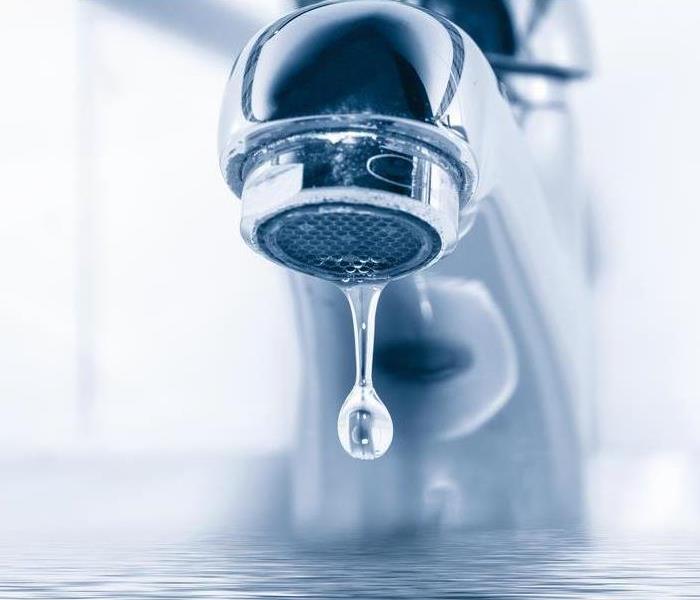 If your faucet is leaking, contact a professional today.
If your faucet is leaking, contact a professional today.
A leaky faucet is a common household problem that can waste a significant amount of water if left unaddressed. Fortunately, fixing a leaky faucet is a relatively simple task that can be accomplished by following a few basic steps. Here's a step-by-step guide on how to fix a leaky faucet.
Step 1: Turn Off the Water Supply
Before you begin to work on the faucet, you need to turn off the water supply to prevent any water from flowing. To do this, locate the shut-off valve under the sink and turn it clockwise to shut off the water.
Step 2: Remove the Handle
Use a screwdriver to remove the handle of the faucet. Depending on the type of faucet you have, there may be a screw on top of the handle or a set screw on the side. Once you remove the screw, gently pull the handle off the faucet.
Step 3: Remove the Packing Nut
Once you have removed the handle, you will need to remove the packing nut. The packing nut is located just below the handle and can be removed using a wrench. Turn the nut counterclockwise until it comes off.
Step 4: Remove the Stem
Once you have removed the packing nut, you can remove the stem of the faucet. The stem is the long, cylindrical part of the faucet that the handle attaches to. Use pliers to pull the stem out of the faucet body.
Step 5: Replace the Washer
The most common cause of a leaky faucet is a worn-out washer. Inspect the washer for any signs of wear or damage, and replace it if necessary. To remove the washer, use a screwdriver to pry it off the stem.
Step 6: Reassemble the Faucet
Once you have replaced the washer, reassemble the faucet in the reverse order that you disassembled it. Insert the stem back into the faucet body, tighten the packing nut, and reattach the handle.
Step 7: Turn On the Water Supply
After you have reassembled the faucet, turn on the water supply and test the faucet to ensure that it is no longer leaking. If the faucet still leaks, you may need to replace other parts, such as the O-ring or cartridge.
In conclusion, fixing a leaky faucet is a simple DIY task that can be accomplished with just a few basic tools. By following these steps, you can save money on your water bill and prevent water waste. However, if you are not comfortable performing the repair yourself, it's always a good idea to call a professional plumber to ensure that the repair is done correctly.
9 Questions to Ask Before Hiring a Water Damage Restoration Company
12/9/2022 (Permalink)
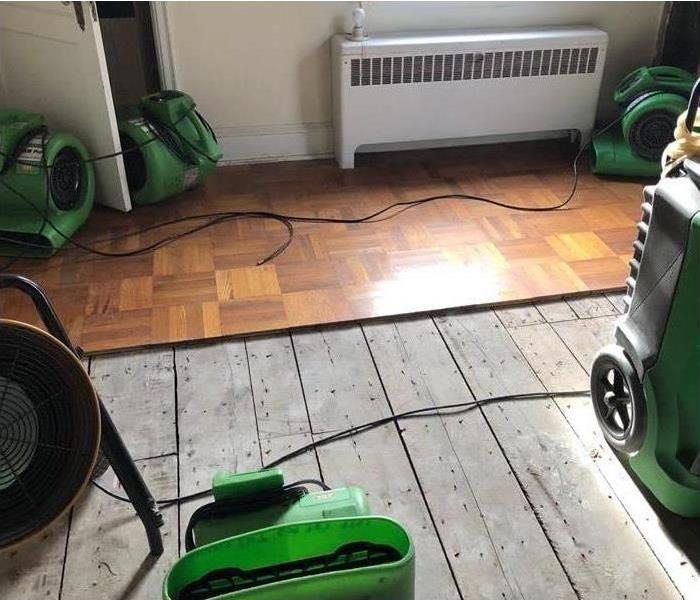 Don’t be afraid to ask these questions, as they are all reasonable and pertinent to the services you will receive.
Don’t be afraid to ask these questions, as they are all reasonable and pertinent to the services you will receive.
9 Questions to Ask Before Hiring a Water Damage Restoration Company
The water damage restoration industry is a highly competitive industry to be in. No matter what city or state you live in, there are likely many restoration companies to choose from after suffering from a water loss. That's why it's important to do your research when choosing a water damage restoration company. The last thing you want to do is hire an inexperienced company to handle your water disaster. You want to make sure they have the right equipment, staff, and training to handle any type of water damage. So, before you hire a restoration company, ask them questions about.
1. How Long Have They In Business?
It's important to ask a restoration business how long they have been in business because not only does it show that they have been around for a while, which means they're likely to be more reliable, but it also shows that they are experienced and know what they're doing. If you're looking for a company to do some work on your house, it's best to find one that has experience with that kind of work, so you can trust that the job will be done well and correctly.
Make sure to ask the restoration business the following:
- How long have they been in business?
- How long have they been in the industry?
- How long have they been providing this type of service?
2. Do They Have a License?
It is important to verify that your water damage restoration company has a license. In some states, it is illegal for anyone other than a licensed contractor to perform any type of water damage repair. Licenses are an excellent indicator of quality because they indicate that the company has met certain standards and has been reviewed by a third-party appraiser.
3. Do They Have Experience?
The next step is to ask about their experience. You need to know that the company has had experience in dealing with your type of water damage, whether it is a flood or another type of disaster. How many times have they performed restoration services like yours? What types of jobs have they completed in the past? Do they have references? It's important to ask these questions because if they haven't done this type of work before, there may be some mistakes made that could cost you more money down the road.
4. What Services do They Offer?
Once you've established that the company you're considering is licensed and insured, it's time to start asking questions.
What services do they offer? Water damage restoration companies will typically offer a variety of services including water removal, dehumidification, furniture removal and air quality testing. They may also be able to help with odor removal as well as sanitation and cleaning. A good water damage restoration company will also be prepared to restore your property back to its pre-damaged state.
5. Are They Available 24/7?
If you have an emergency situation, it's important to know that your water damage restoration company can be reached 24/7. What happens if you have a flood at 2am? Will they pick up the phone and help you then? You want a company that will respond quickly when you need them most. That's just one of the benefits of working with a full-service restoration company such as SERVPRO of Egg Harbor/Township—they're available 24/7 for emergency calls or after-hours emergencies.
6. Will They Work with My Insurance?
While it is your job to pay for the repairs, you will find that many insurance companies are willing to reimburse you if they can determine that the damage was not your fault. Insurance companies have their own process for deciding whether or not they will pay for a claim. If you have any questions or concerns about this process, ask before hiring a company.
7. What Type of Equipment Do They Use?
Water damage restoration companies have a myriad of equipment at their disposal. Some of these tools are considered standard industry equipment, while others are unique to the company you choose. One way to find out what type of equipment they use and why is by asking them about it directly. If you’re not sure what they should be using, here’s a list:
- Dehumidifiers – These machines remove excess moisture from your home so that it can dry quickly and prevent mold growth. They also keep humidity levels low which prevents further damage from occurring in your home
- Steam cleaners – This machine uses high-temperature hot water steam to clean up any remaining dirt or grime left behind by the flood water in your house after it has been removed
- Air movers – These fans blow air around your home so that all its surfaces get dried properly before being covered up again; this helps prevent further damage from occurring because airflow will be improved thus allowing better circulation throughout every room
8. Are the Technicians Trained?
One of the most important questions to ask when hiring a water damage restoration company is whether or not they have trained technicians. This will allow you to be certain that the job will be done right and in a timely manner, which can often mean the difference between having dry floors and walls or remaining damp for weeks on end.
Trained technicians are also more likely to do an excellent job at cleaning up your Northfield, NJ home after it has been damaged by water because they know what equipment works best for removing mold and mildew from surfaces such as carpeting or drywall. If there is no training involved, then chances are good that whoever comes out to assess your situation might not know how best clean up after such an event.
Trained technicians are much faster than amateurs when it comes time for repairs because they have been taught how best get rid of all moisture as soon as possible!
9. What Will the Process Look Like?
What will the process look like? How long will it take for them to be on-site, and how long does each step take? It’s important to know these things beforehand so that you can plan appropriately.
How will they remove water and dry your home? The type of drying equipment used depends on several factors, including where your home is located, its construction materials, and whether it was flooded by sewage or fresh water. However, they should still have a plan in place for dealing with any kind of water damage situation.
Don’t be afraid to ask these questions, as they are all reasonable and pertinent to the services you will receive. This information will help you determine if a company is right for your needs or if there are better options available.
How To Drain a Flooded Basement?
11/2/2022 (Permalink)
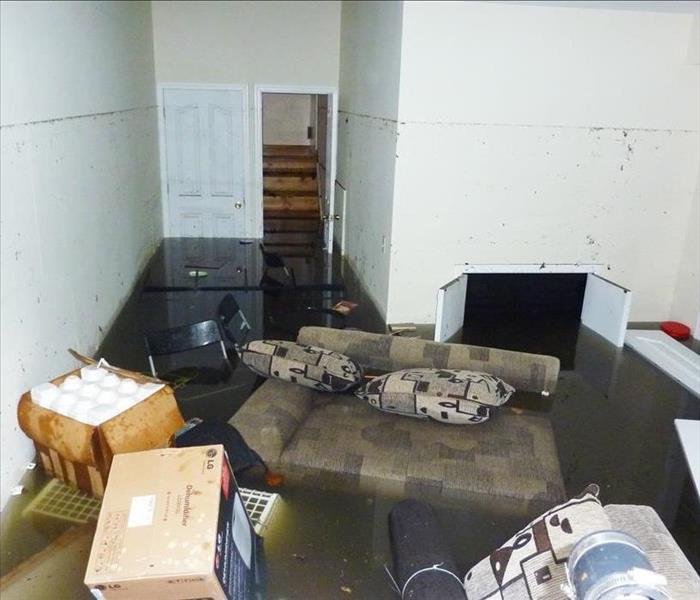 When a basement floods, it's important to act quickly.
When a basement floods, it's important to act quickly.
How Can a Flooded Basement Be Drained?
When a basement floods, it's important to act quickly. It's also important to know for sure if the water is coming from a clean source.
Steps to Drain Flooded Basement
Identify the source of water: After you have determined that your basement is flooding, identify the source of the water. If it is not coming from a clean source, such as a rainwater downspout or broken pipe, then call a professional to take care of it. If it is coming from a clean source, you can use a sump pump to remove the water.
Use a sump pump: Sump pumps are quite popular and can be found at most home improvement stores. They are not meant to replace a commercial pump, but they can help you get the water out of your basement quickly.
For sump pumps to work properly, make sure that you install them in an area where there is enough space around them so that they can drain all the water from your basement. If there isn’t enough room around the pump itself, then you may want to consider installing additional drainage pipes or using an underground drain system instead of buying a new sump pump altogether.
Call an Expert
Remember that it’s always better to call an expert. If you decide to clean the water yourself, wear protective clothing like gloves and a rubber apron. Do not use bleach or other chemicals—they can react with the materials in your basement and cause more damage than good. Instead, use a pump to remove as much of the water as possible before calling for help.
If your basement has been flooded due to heavy rain or another natural disaster, don’t try drying out or cleaning up on your own! You could make things worse by using chemicals that are harmful when mixed with other substances found in basements (such as those used in washing machines).
Pump out the Water
If you have a sump pump, use it. If you don’t know how to use a sump pump, call an expert. If you can’t find a source of clean water to pump out the water, then it’s time to get creative and improvise.
If your basement is completely flooded, call 911 immediately and let them know about your situation. They will send out emergency personnel who can help evacuate people in need or aid with other tasks such as pumping out flooded basements or saving pets from drowning in flood waters.
When a Basement Floods- Act Quickly
It's also important to know for sure if the water is coming from a clean source or an unclean source. If you don't know where the water is coming from, you may end up using a lot of time and resources on something that won't help at all.
If your basement has flooded because of a leak in your roof, then there's no need to continue reading this article because we will be happy to help! Call us now at (609) 383-9785 and we'll send someone over right away.
With these tips in mind, you can get started on the journey to dry out your basement and keep it that way. It's worth noting that if you have any question about what to do next, call an expert or seek professional help immediately.
3 Causes of Overflowing Toilets
7/12/2022 (Permalink)
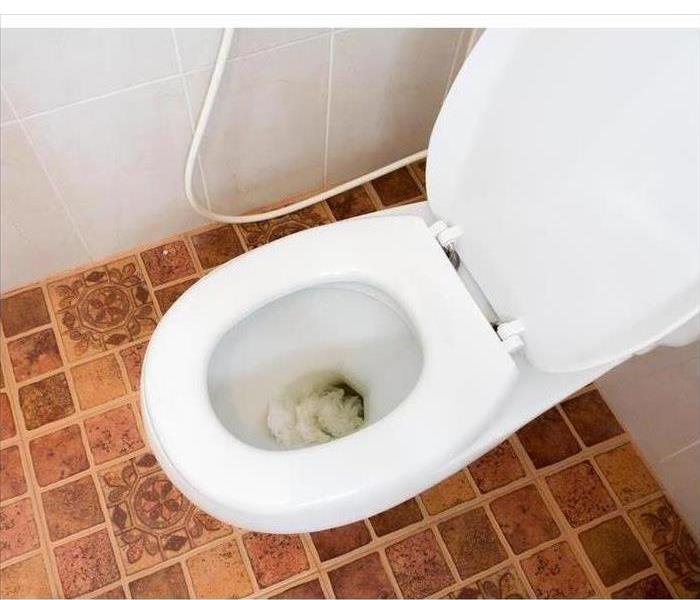 The first potential culprit of your overflowing toilet is a clogged pipe.
The first potential culprit of your overflowing toilet is a clogged pipe.
Three Reasons Why Your Toilet Might Overflow
When you own a house, there are a variety of challenges that you might face. Overflowing plumbing fixtures is a common problem, but that doesn’t mean it’s simple. It can require sewage cleaning and repairs and can sometimes become reoccurring. If your toilet is overflowing when you take a shower, this means that the water is unable to drain properly. The following are a few reasons why this might happen in your Ventnor, NJ, home.
1. A Clog
The first potential culprit of your overflowing toilet is a clogged pipe. This can happen when items in the drain don’t disintegrate properly. To prevent this, be careful of what you flush down the toilet or pour down the sink. Food, grease, paper towels, wipes, and other items that are not designed to be disposed of in this way can cause clogs and damage.
2. Overgrown Tree Roots
Something else that may be blocking the drain and causing a toilet overflow is tree roots. Sometimes, particularly if there are small cracks or leaks in the pipe, roots can be drawn to the moisture inside and begin to grow there. When this happens, water is unable to move through the pipes in these areas.
3. Damaged Pipes
Over time, aging pipes can begin to weaken or may become damaged by the environment. If this happens, then sewage cleaning is almost inevitable. Be sure to perform maintenance on your plumbing system regularly and replace pipes that show early signs of damage, such as rust or small holes, to prevent them from breaking.
No matter the cause, an overflowing toilet can be an inconvenience at best and the cause of severe damage to your house at worst. If you have a large amount of water in your home, it is a good idea to have sewage cleaning done by a professional cleanup and restoration service. They can help locate the cause of the overflow and perform any necessary repairs.
What Do You Do If a Pipe Breaks in Your Building?
6/14/2022 (Permalink)
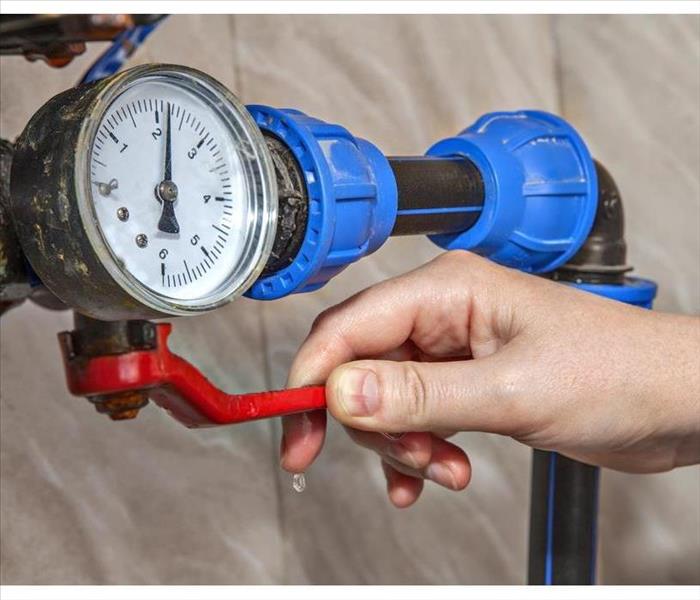 Turn off the main water to the building as soon as possible.
Turn off the main water to the building as soon as possible.
What Should You Do If a Pipe in Your Building Bursts?
If a disaster strikes in your Northfield, NJ, office building, you want to be ready to act. You have to consider the safety of everyone in the building. You also worry about office equipment and materials. Bursting pipes, for example, can cause extensive flooding, leading to damage and destruction. If you know how to respond appropriately to this situation, you can minimize long-term problems.
1. Shut Off the Water
Once you notice bursting pipes, get everyone to safety. You should then turn off the main water to the building as soon as possible. This will prevent more water from spilling out of the broken or damaged pipes and causing more flooding.
2. Turn Off the Electricity
Next, shut off the electricity to the Northfield, NJ, building. If there is water damage or standing water around, on or near any electronics, there is a risk of shock or electrocution.
3. Call a Plumber
Fortunately, in emergencies, many plumbers are available to come to your business 24/7. An experienced plumber has the knowledge and training to fix a broken pipe and address other concerns. A plumber can also replace other plumbing components.
4. Begin Removing Water
You don't want to leave water in your building for long. It can continue to damage flooring, electronics, furniture, and other items. Plus, mold can begin to form. Use a wet vacuum to clear out as much water as you can.
5. Call a Water Cleanup Company
If the flooding is widespread, you should contact a professional disaster cleanup company to remove the water. Professionals have the right equipment and proven methods to thoroughly get rid of any remaining water and dry the affected areas. The company will also rebuild and replace ruined materials.
Bursting pipes can create significant damage to your building. The faster and more effectively you respond, the better.
What To Do After a Basement Flood
4/25/2022 (Permalink)
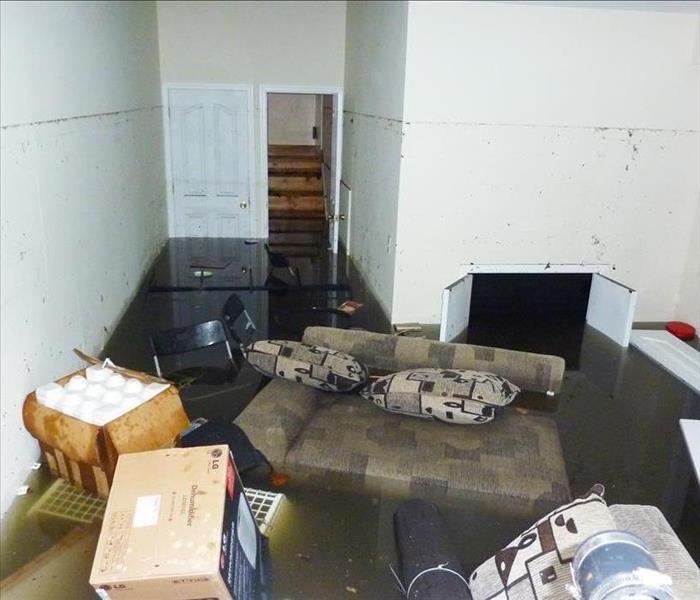 A flooded basement in Cardiff, NJ.
A flooded basement in Cardiff, NJ.
After a Basement Flood, What Should I Do?
Flooding in your Cardiff, NJ, basement can cause serious problems. Fortunately, further damage can often be prevented with quick and careful action.
Potential Issues
A basement flood can lead to a variety of other problems. Some of the most common are the following:
- Electrical hazards
- Mold growth
- Structural damage
Water and electricity are a dangerous combination, so it is extremely important to be mindful of all sources of electricity in a flooded room. Before you begin cleaning, turn off the power to the basement. Do not use any electronic devices or appliances until an electrician has told you that it is safe to do so.
Mold growth and structural damage are less immediate threats but should still be prevented if possible. Fungus can begin to grow on wet items within 24 hours. Additionally, the longer your items are wet, the more likely they are to suffer structural degradation. Therefore, it is important to dry out the area as soon as possible.
Cleanup Process
The first step to take in cleaning a water-damaged basement is finding and stopping the source of the flooding. Pipe repair and other necessary actions should be completed before you begin drying. It won’t do any good to dry out the basement if a pipe is still leaking. Once the source of the water has been addressed, it is time to begin drying and cleaning the area. Use wet/dry vacuums or pumps to remove standing water and fans or dehumidifiers to pull out any remaining moisture. Then sanitize all affected areas, and throw away anything that cannot be completely sanitized and dried. When everything is clean and dry, begin making repairs or procuring replacements for damaged items.
Basement flooding is a fairly common problem that can happen to anyone. Fortunately, taking adequate safety precautions and acting quickly decreases the likelihood of many of the associated risks occurring.
How To Know When Water Damage Requires You To Replace Your Carpet
1/19/2022 (Permalink)
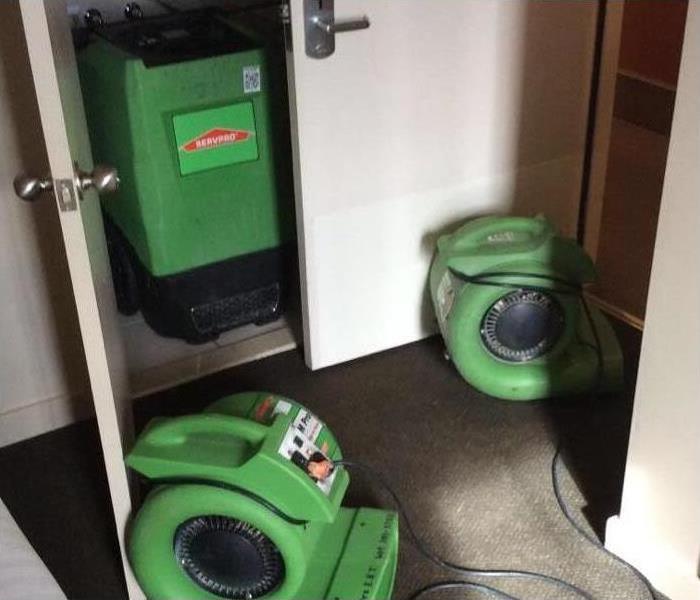 SERVPRO has a team of licensed water damage restoration professionals who are ready to restore your home at any time.
SERVPRO has a team of licensed water damage restoration professionals who are ready to restore your home at any time.
When Is It Time To Replace Your Carpet Due To Water Damage?
When water infiltrates your home, many areas can suffer. Your floor most commonly bears the brunt of a pipe break or other flooding problems. In many cases, a professional flood cleanup company will have to replace the flooring. However, if you’re fortunate, you may be able to salvage this part of your house. It’s helpful to know when your flooring needs to go and when you can save it.
When To Say Goodbye
You may hate to part with your carpet, but even moderate water issues can damage it beyond repair. Here are some cases in which you’ll need to tear it out and put down something new:
- You detect mold on or under the carpets.
- The carpet was wet for three days or more.
- The flooding included black water.
Can’t Deal With Mold
The amount of water and time it sits on your floor has a big effect on whether mold will develop. You can’t keep the flooring if mold is present. Have a specialist look for mold growth.
Time Is Not on Your Side
In the event of a pipe break, severe weather, toilet backup or any other incident that brings water into your house, you hope to detect it early. However, if you’re out of town at the time, or if the leak is in a place you can’t easily find, water can sit on the carpets for several days or longer. In these cases, it may be difficult, if not impossible, to sufficiently clean the area.
If the flooding in your Northfield, NJ, home came from sewage, you’ve got a water problem, and restoration of the affected area is essential.
If these issues are present following a pipe break or other cause of flooding, you shouldn’t try to keep your carpet. Instead, call an expert to help you clean up and make your space safe again.
How To Respond to Water in Light Fixtures
12/22/2021 (Permalink)
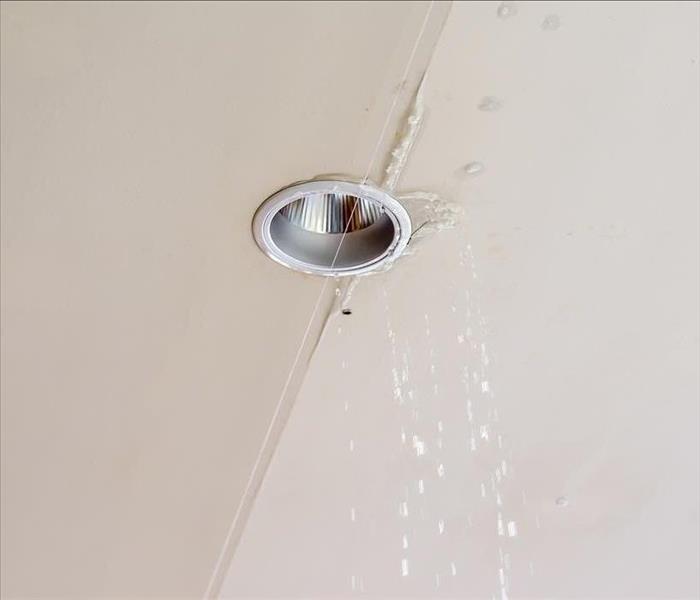 If you see water in the ceiling fixtures, don't try to release the water.
If you see water in the ceiling fixtures, don't try to release the water.
How to Handle Water in Lighting Fixtures
Water that drips from the fixtures can be a pretty frightening experience, especially when you realize the extent of damage that water in light fixtures could represent. If you see water in the ceiling fixtures, don't try to release the water. Take the following steps to prevent further damage.
- Shut off the electricity to the home at the breaker box.
- Use a non-contact voltage tester to confirm that power is off.
- Shut down water to the house at the main shutoff valve.
- Contact a Ventnor, NJ, professional.
Once these steps have been completed, remove any water-logged furnishings to a dry location.
Keep Your Family and Home Safe
It may seem convenient or even funny to poke at the water in light fixtures, but there's more to worry about than ceiling damage. The combination of water and electricity could put everyone in the home at risk of shock or electrician.
Why Not DIY This Damage?
There are several other reasons to step back and let professionals deal with water in the ceiling. For example, identifying the source of the leak is difficult. The water could have covered a lot of distance before pooling in your fixtures. The water may have caused structural damage or mold, and professionals are often better prepared for dealing with those large-scale problems.
Address the Underlying Problem
Once the leak and the ceiling damage have been addressed, you may want to tackle some other home repairs. If the leak originated with your roof, you might need to repair holes in the roof and replace shingles or other roofing. You may need to replace insulation or clean out the gutters running along the roofing. Once again, significant damage in these areas should be tackled by Ventnor, NJ, professionals.
The best way to maintain safety and prevent further damage to your home is to shut off both the water and electricity and then contact a water damage repair professional. These experts will address water in light fixtures, remove the damaged components, repair the leak and the ceiling damage, and install any new fixtures as necessary.




 24/7 Emergency Service
24/7 Emergency Service








